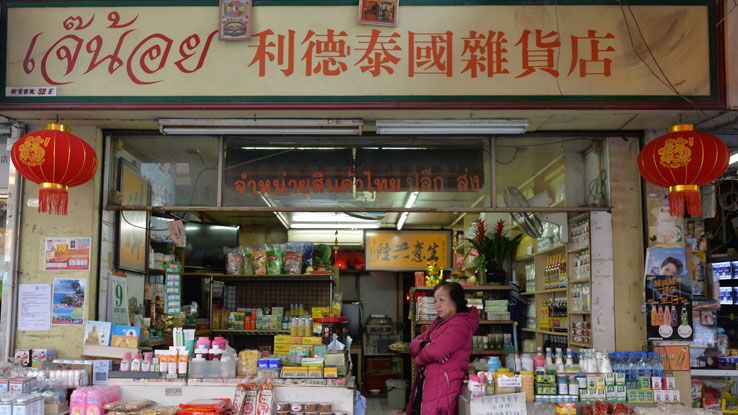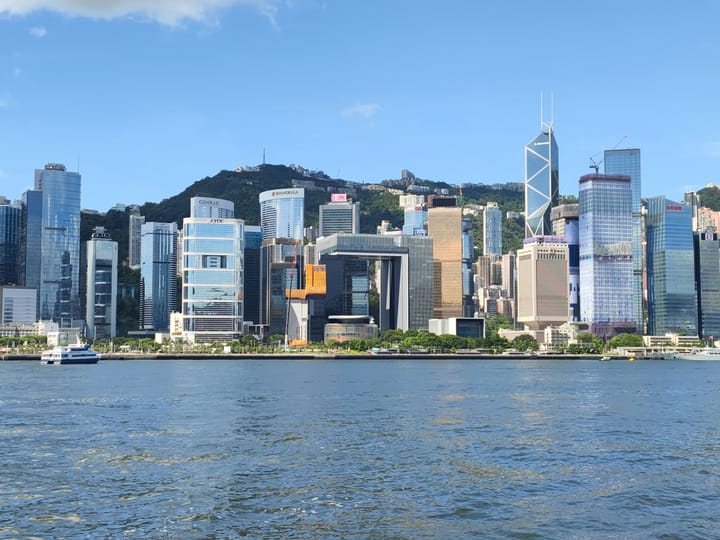Little Thailand – exploring Hong Kong’s diverse Thai Chinese neighborhood

A few minutes every morning is all you need.
Stay up to date on the world's Headlines and Human Stories. It's fun, it's factual, it's fluff-free.
Almost every major city in the world has a neighborhood called “Chinatown.” Of course, in major Chinese cities, Chinatown is everywhere. Ethnic neighborhoods in Asian cities are composed of immigrants from nearby Southeast Asian countries. In Hong Kong, Vietnamese, Indian and many other ethnicities who have immigrated in various streams have found and created their own enclaves such as one very popular neighborhood for dining out, “Little Thailand.” Little Thailand is Kowloon City.
Little Thailand’s diverse cultural history
Tucked away on Kowloon’s far east side and along the edges of Kowloon Bay sits the largest concentration of Hong Kong’s Thai population. The remains of monumental historical sites such as the old Kai Tak Airport still have imprints left on the creation of Little Thailand. Still without an MTR station, Kowloon City has had a history of other forms of transportation.
New World First Ferry continues to operate the ferry from Kowloon City to North Point, but before even the ferry, the Kai Tak airport transported people across countries through its skies, which made sure that all the buildings in the neighborhood were short and squat, as planes would hit cruising altitude right over the rooftops. This scenario kept the property prices low, too. So low, that economic migrants from Thailand could afford to settle around the 1970s. They were later joined in the 90s by more affluent Thai immigrant business owners forced from the Central district due to redevelopment.
Lastly, there’s the proximity of the Kowloon Walled City and its Chiu Chow population. Just like the Chiu Chow people, many Thai Chinese stem from the Guangdong region. Indeed, Thai Chinese are the largest minority population in Thailand. The Chiu Chow people from the eastern region of Guangdong migrated to Thailand in the early 1900s and were largely the force that created the Thai Chinese ethnic group.
The Thai population in Kowloon City is composed of Thai Chinese, similar to Thailand, because through the years the Chiu Chow and Thai people have often blended together. The ethnic demographic of Kowloon City has grown more diverse with an influx of Indonesian and Vietnamese people. Yet, the Thai influence stays strong.
Some cultural activities are still practiced such as Songkran, the famous water-soaked new year celebration of Thailand. Traditional drum performances, beauty pageants and water blessings are all parts of the celebration in April. Also, a parade slides through the slippery streets down to the local playground where water is joyfully splashed and tossed around onto the attendees. Many local Hong Kong people come to the neighborhood during the daylong festival to be tourists in their own city.
Culinary culture at the heart of Little Thailand
Other times people enjoy visiting Little Thailand because of its great array of Thai restaurants and grocery shops. Inside the Kowloon City Market is Amporn Thai Food, which is a dai pai dong featuring Thai cuisine. It offers well-known dishes like grilled pork cheek, laab salad and classic Thai curries. Guests can opt for the usual level of spice, or amp up the spiciness to the highest levels of tolerance.
On Nam Kok Road, the fusion of the Chiu Chow and Thai people can be found at Thai Sik Mei Ji, a restaurant which connects both cultural cuisines by using Thai spices on Chiu Chow dishes like oyster omelets and deep-fried century eggs. Walking along Nga Tsin Wai Road offers a tour of Thai restaurants, busiest during dinnertime.
South Wall road has the top rated Thai restaurant on Openrice, Orange Elephant Thai Restaurant, which has more than 500 good reviews. For dessert, South Wall Road hosts a series of shops offering khanom, a layered treat of coconut cream and jelly or sticky rice. Pandan-based desserts are even more frequent.
If you want to cook your own Thai cuisine, plan a visit to Ruamjai Thai Grocery which imports round shaped green aubergines, bird’s eye chilies, Thai herbs like basil and dill, and fruits like sour mafai or Burmese grape. For those reluctant chefs, you can find other groceries offering ready made curry packages for a quick delicious meal.
At LM Thai Supplier, shoppers can purchase statues of deities like Ganesh or Buddha, reflecting the Thai religious diversity. On the altar at this shop, both Thai and Chinese Buddhism is recognized. The altar offerings for the ancestors are colorful orange bottles of Fanta and rainbow-colored Thai sweets. These Thai grocery shops now are joined by shops selling Indonesian foods and Halal meats. As with the changing tides of immigration, the enclave of Little Thailand is diversifying to include new neighbors.
Is your business doing something cool that you want to show off? Get in touch at hello@themilsource.com




Comments ()